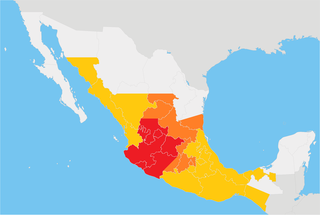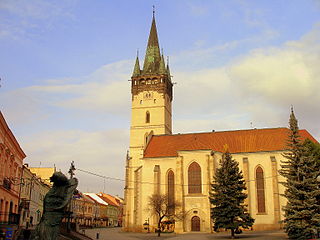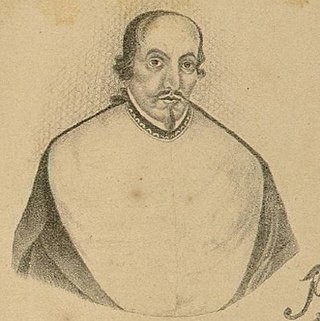Related Research Articles

The history of Christianity follows the Christian religion as it developed from its earliest beliefs and practices in the first-century, spread geographically in the Roman Empire and beyond, and became a global religion in the twenty-first century.

Isidore of Seville was a Hispano-Roman scholar, theologian, and archbishop of Seville. He is widely regarded, in the words of 19th-century historian Montalembert, as "the last scholar of the ancient world".

The Society of Jesus, also known as the Jesuit Order or the Jesuits, is a religious order of clerics regular of pontifical right for men in the Catholic Church headquartered in Rome. It was founded in 1540 by Ignatius of Loyola and six companions, with the approval of Pope Paul III. The society is engaged in evangelization and apostolic ministry in 112 nations. Jesuits work in education, research, and cultural pursuits. Jesuits also conduct retreats, minister in hospitals and parishes, sponsor direct social and humanitarian ministries, and promote ecumenical dialogue.

Western Christianity is one of two subdivisions of Christianity. Western Christianity is composed of the Latin Church and Western Protestantism, together with their offshoots such as the Old Catholic Church, Independent Catholicism and Restorationism.

Cuius regio, eius religio is a Latin phrase which literally means "whose realm, their religion" – meaning that the religion of the ruler was to dictate the religion of those ruled. This legal principle marked a major development in the collective freedom of religion within Western civilization. Before tolerance of individual religious divergences became accepted, most statesmen and political theorists took it for granted that religious diversity weakened a state – and particularly weakened ecclesiastically-transmitted control and monitoring in a state. The principle of "cuius regio" was a compromise in the conflict between this paradigm of statecraft and the emerging trend toward religious pluralism developing throughout the German-speaking lands of the Holy Roman Empire. It permitted assortative migration of adherents to two religious groups, Roman Catholic and Lutheran, eliding other confessions.

The Catholic Church, also known as the Roman Catholic Church, is the largest Christian church, with 1.39 billion baptized Catholics worldwide as of 2022. It is among the world's oldest and largest international institutions, and has played a prominent role in the history and development of Western civilization. The church consists of 24 sui iuris churches, including the Latin Church and 23 Eastern Catholic Churches, which comprise almost 3,500 dioceses and eparchies located around the world. The pope, who is the bishop of Rome, is the chief pastor of the church. The Diocese of Rome, known as the Holy See, is the central governing authority of the church. The administrative body of the Holy See, the Roman Curia, has its principal offices in Vatican City, a small independent city-state and enclave within the Italian capital city of Rome, of which the pope is head of state.

The Cristero War, also known as the Cristero Rebellion or La Cristiada, was a widespread struggle in central and western Mexico from 3 August 1926 to 21 June 1929 in response to the implementation of secularist and anticlerical articles of the 1917 Constitution. The rebellion was instigated as a response to an executive decree by Mexican President Plutarco Elías Calles to strictly enforce Article 130 of the Constitution, a decision known as the Calles Law. Calles sought to limit the power of the Catholic Church in Mexico, its affiliated organizations and to suppress popular religiosity.
Missionary work of the Catholic Church has often been undertaken outside the geographically defined parishes and dioceses by religious orders who have people and material resources to spare, and some of which specialized in missions. Eventually, parishes and dioceses would be organized worldwide, often after an intermediate phase as an apostolic prefecture or apostolic vicariate. Catholic mission has predominantly been carried out by the Latin Church in practice.

Christianity in Asia has its roots in the very inception of Christianity, which originated from the life and teachings of Jesus in 1st-century Roman Judea. Christianity then spread through the missionary work of his apostles, first in the Levant and taking roots in the major cities such as Jerusalem and Antioch. According to tradition, further eastward expansion occurred via the preaching of Thomas the Apostle, who established Christianity in the Parthian Empire (Iran) and India. The very First Ecumenical Council was held in the city of Nicaea in Asia Minor (325). The first nations to adopt Christianity as a state religion were Armenia in 301 and Georgia in 327. By the 4th century, Christianity became the dominant religion in all Asian provinces of the Eastern Roman Empire.
Christianity began as a Second Temple Judaic sect in the 1st century in the Roman province of Judea, from where it spread throughout and beyond the Roman Empire.

Alonso de Montúfar y Bravo de Lagunas, O.P., was a Spanish Dominican friar and prelate of the Catholic Church, who ruled as the second Archbishop of Mexico from 1551 to his death in 1572. He approved and promoted the devotion to Our Lady of Guadalupe that arose during his reign.
The history of the Catholic Church is the formation, events, and historical development of the Catholic Church through time.

In 16th-century Christianity, Protestantism came to the forefront and marked a significant change in the Christian world.
In the year before the Council of Constantinople in 381, the Trinitarian version of Christianity became the official religion of the Roman Empire when Emperor Theodosius I issued the Edict of Thessalonica in 380, which recognized the catholic orthodoxy of Nicene Christians as the Roman Empire's state religion. Historians refer to the Nicene church associated with emperors in a variety of ways: as the catholic church, the orthodox church, the imperial church, the imperial Roman church, or the Byzantine church, although some of those terms are also used for wider communions extending outside the Roman Empire. The Eastern Orthodox Church, Oriental Orthodoxy, and the Catholic Church all claim to stand in continuity from the Nicene church to which Theodosius granted recognition.

Mathias Hovius (1542–1620), born Matthijs Van Hove, was the third Archbishop of Mechelen from 1596 to 1620. As Archbishop, Hovius presided over implementing the Catholic Reformation in the Spanish Netherlands.

Juan López de Zárate was a Roman Catholic prelate who served as the first Bishop of Antequera, Oaxaca (1535–1555).
Martín Sarmiento de Osacastro, O.F.M. was a Roman Catholic prelate who served as Bishop of Tlaxcala (1548–1557).
The Third Mexican Provincial Council was a 1585 provincial council of the Catholic Church in the Archdiocese of Mexico. Unlike the first two Mexican Provincial Councils, it was approved by the Holy See. It called for reform of the repartimiento system of Indian labor.
The Second Mexican Provincial Council was a 1565 provincial council of the Catholic Church in the Archdiocese of Mexico.
References
- 1 2 3 Dussel, Enrique (1981). A History of the Church in Latin America: Colonialism to Liberation (1492-1979). Wm. B. Eerdmans Publishing. p. 56. ISBN 978-0-8028-2131-7.
- ↑ Storch, Tanya (15 May 2017). Religions and Missionaries around the Pacific, 1500–1900. Routledge. ISBN 978-1-351-90478-0.
- ↑ Galindo, Rex (22 January 2024). Bragagnolo, Manuela (ed.). The Production of Knowledge of Normativity in the Age of the Printing Press: Martín de Azpilcueta’s Manual de Confessores from a Global Perspective. Brill. p. 330. ISBN 978-90-04-68704-2.
- ↑ Patte, Daniel (6 October 2021). The Cambridge Dictionary of Christianity, Volume Two. Wipf and Stock Publishers. p. 800. ISBN 978-1-6667-3484-3.
- ↑ Claassen, Cheryl; Ammon, Laura (10 February 2022). Religion in Sixteenth-Century Mexico: A Guide to Aztec and Catholic Beliefs and Practices. Cambridge University Press. p. 54. ISBN 978-1-009-00631-6.